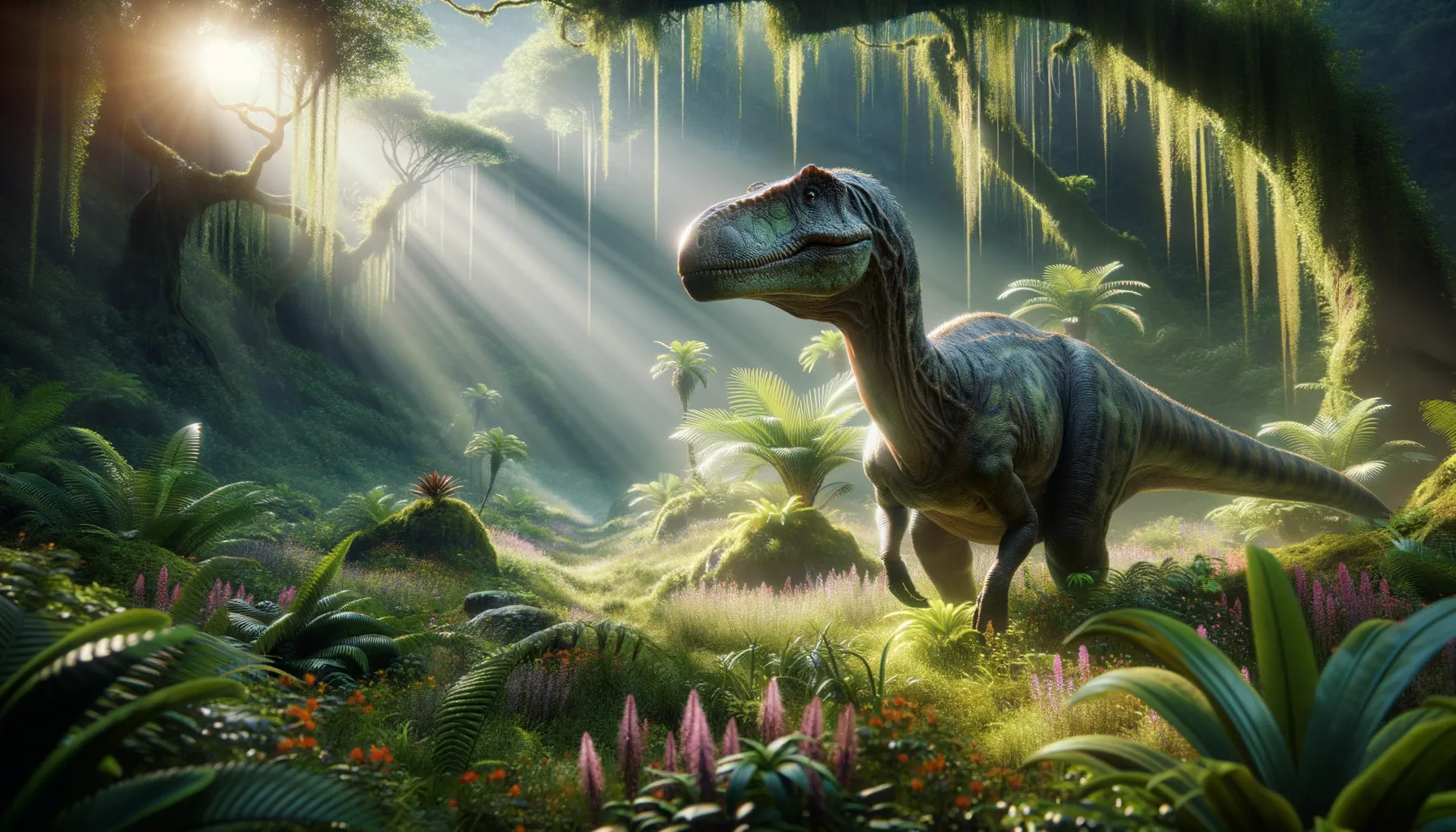
Deuterosaurus
Ancient therapsid, ancestor to mammals.
Period
Permian
Length
Measured around 10 feet in length.
Height
Stood about 3 to 4 feet tall.
Weight
Roughly 300 to 400 kilograms.
Deuterosaurus was a primitive reptile-like creature from the Permian period, primarily known from fossil finds in Russia. It was part of a group called therapsids, ancestors to mammals. Despite its somewhat misleading name, which suggests a dinosaur, Deuterosaurus predates them by millions of years. As an herbivore, it played a crucial role in its ecosystem, feeding on the lush, diverse plant life of the time. Its physical build suggests a slow, steady lifestyle.
Diet
Deuterosaurus was primarily herbivorous, feeding on the rich flora available during the Permian period. This included various ferns and coniferous plants that were abundant at the time.
Hunting
As an herbivore, Deuterosaurus did not engage in hunting. Instead, it grazed and moved slowly through its environment, browsing for plant material.
Environmental challenges
Deuterosaurus lived during a time of significant environmental fluctuations, including changing climates and habitat shifts due to continental drift. Adaptation to these changes was critical for survival. Predators of the era posed additional challenges, necessitating a life of awareness and defense for this slow-moving herbivore.
Speed
Relatively slow-moving.
Lifespan
Estimated to live for a few decades.
First discovery
Discovered in the 19th century in Russia.
Fun Facts
- Deuterosaurus is one of the earliest known representatives of the therapsids, a group that eventually gave rise to mammals.
- Despite its name meaning 'second lizard', Deuterosaurus was not a dinosaur, but rather a distant relative of mammals.
- Fossils of Deuterosaurus have been found in what is now Russia, dating back to the Middle Permian period, about 265 million years ago.
- Deuterosaurus is thought to have been a slow-moving herbivore, possibly munching on tough vegetation with its strong jaws.
- This prehistoric creature had a bulky body and its skull was relatively small compared to the rest of its body, suggesting it had a unique feeding style.
- Deuterosaurus belonged to a group known as the Dinocephalia, which means 'terrible heads' due to the large and heavily built skulls of its members.
- The environment Deuterosaurus lived in likely resembled vast swampy areas with rich plant life, setting the scene for this ancient creature's daily life.
Growth and Development
Deuterosaurus likely experienced a slow rate of growth compared to its later therapsid descendants. As it matured, its physical features became more pronounced, aiding in its identification through fossils. This slow development may have been an adaptation to its stable environment and herbivorous diet.
Habitat
Deuterosaurus inhabited the swampy and wooded regions present in what is now modern-day Russia. These areas provided abundant plant life for grazing and offered natural protection from predators. Seasonal changes in climate could have influenced its habitat preferences and movement patterns throughout the year.
Interaction with other species
Living alongside various therapsids and early reptiles, Deuterosaurus would have had to coexist with both competitors for food and potential predators. While primarily focused on its own survival, it played an integral part in the food web, supporting predator species indirectly by maintaining a steady population.
Natural lifespan
Deuterosaurus likely lived for several decades in the wild.
Reproduction
Deuterosaurus reproduced through laying eggs, as was typical of Permian therapsids. Nesting behaviors remain speculative, but it likely involved some degree of care for nesting sites to ensure the survival of its offspring.
Social behaviour
This creature's social habits remain largely unknown, but like many herbivorous species, it may have lived in small groups or herds. Such social structures would have provided mutual protection against predators and enhanced foraging efficiency.
Fossil locations
Fossils of Deuterosaurus have predominantly been found in the regions of modern-day Russia. These locations offer insights into the Permian landscapes that these animals once roamed.
